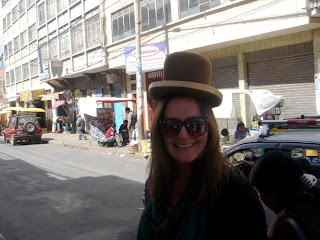
We started the trip in Puno, Peru, visiting the floating islands of Lake Titicaca, which I was excited to see. There are indigenous tribes that live on reed islands in the middle of the lake, eschewing modern technology and preserving a lifestyle that dates back centuries. However, I was a little disappointed. It was so touristy – a 30-minute boat ride to what amounted to a floating artisan market. The Ayamara culture is rich with history, but this felt like such a bastardization of that culture, catering to the lowest common denominator. We were ferried over to the ‘capital’ island (after paying an additional ‘tip’) where vendors offered inflated bottled water and postcards. Granted, we only had a couple hours, so we went for the fastest and cheapest tour. There are more remote islands that, I hope, offer a better glimpse into the true nature of these ancient peoples, but what I saw left me with an icky feeling. The lake was picturesque though, especially as we got further away from Puno.


We then spent a few days in La Paz, Bolivia. The city is built in a stunningly dramatic fashion, cascading down steep mountainsides. It’s all windy hills (that leave you quite winded) and crowded alleyways full of Bolivian women in traditional dress hawking everything from mouse pads to potatoes. It is a decidedly third-world city, but charming in its own, loud way. There are also a surprising number of delicious international restaurants, which we took full advantage of, shockingly. (Bolivian food being the poor-man’s version of Peruvian food and thus not suitable for vacation!) I think we were all surprised at how often we kept comparing Bolivia to Peru, and further surprised by how often Peru won. Absence certainly does make the heart grow fonder.
In front of the presidential palace, La Paz. Take that, Evo!

However, La Paz came out ahead in the artisanry, or maybe it was just because it was different from what I’ve spent the last two years buying. Either way, we bought lots of souvenirs (mainly for ourselves), ate lots of meals, and hung out with other backpackers in the hostel bar.
The real adventure of the trip was a three-day tour of southwestern Bolivia, home of the salares (salt flats). My main motivation for the whole trip was seeing these salt flats; the rest was of little concern to me. Luckily, my naiveté paid off and I was floored by the entire trip. Words and pictures will never do the scenery justice … but that won’t stop me from trying!

We spent the majority of the first day on and around the salt flats. They were incredible. It’s blindingly white for as far as the eye can see. We were there on the tail-end of rainy season, so some parts of the salares were still underwater, turning them into giant reflecting pools. The best way I can describe it is simply white. Everywhere you looked was bright, bright white. It quite literally took my breath away (though, admittedly that might have had something to do with the altitude) and is like nothing I’ve ever seen before. The big attraction of the salares is the amazing pictures you can take playing around with perspective. We had a little trouble figuring out the ‘trick’, but spent a hilarious couple hours trying our hardest. Eventually we had limited success. While the pictures are a wonderful memento, that view and that experience are what I will hold in my mind’s eye forever. Amazing.



The contradictions confound the senses and it’s hard to make sense of what you’re seeing. The best I can come up with is ‘otherworldly.’ We drove across unending sand dunes, punctuated by crystal clear high-altitude lakes encrusted with bright white mineral deposits. We drove across dried up lakebeds and through a Dali-esque landscape of lava rocks. We bunked down next to a crimson lake (tinted by billions of microorganisms) that was home to hundreds of pink flamingos. And behind it all were towering snow-capped mountain peaks. Every stop afforded another unique and stupefying vista. We saw the sun rise between the sulphuric burps of 5,000 meter-high geysers and watched the sun set over a dusty, remote Andean village. I’m not exaggerating when I say it’s the weirdest, most wonderful place I’ve seen.




We spent a lot of time in cars, buses, and planes to see so many places in such a short amount of time but it was undoubtedly worth it. If you ever find yourself with an invitation to the altiplano of Bolivia, don’t hesitate to check it out for yourself!




As Liz Lemon would say, I want to go to there.
ReplyDelete